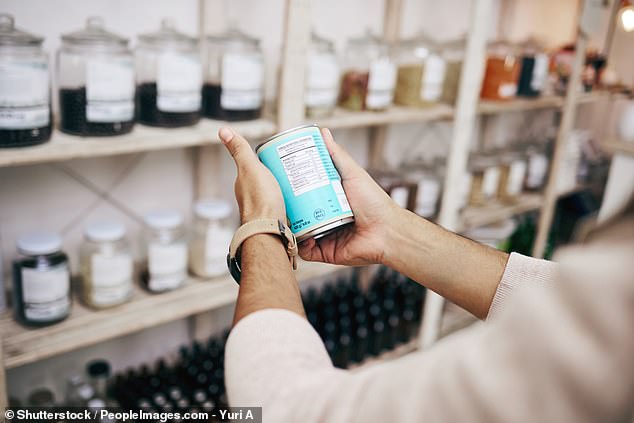According to a new ruling, cereals, yogurt and protein bars are no longer considered “healthy.”
The FDA this week updated its definition of “healthy,” requiring packaged foods to meet certain criteria.
For a food to use the “healthy” label, it must have a certain amount of nutrients, such as protein and whole grains, and contain a minimum amount of harmful ingredients such as sugar and saturated fat.
High-sugar cereals, protein bars, and yogurts that were once labeled “healthy” will no longer qualify.
Meanwhile, the new “healthy” foods will include olive oil, salmon, canned vegetables and even water and coffee, for the first time.
FDA officials said the update, the first in 30 years, aims to prevent and reverse the epidemic of chronic diseases such as obesity, diabetes and cancer in the United States.
Critics, however, criticized the ruling for “excluding” foods despite “clear and unequivocal scientific evidence” that they can be part of a healthy diet.
The FDA has updated its requirements for a food to be labeled “healthy.” While water and coffee are not considered “healthy,” high-sugar yogurts, breads and cereals will no longer be able to be labeled as such.
FDA Commissioner Dr. Robert Califf said in a statement, “It is critical to the country’s future that food be a vehicle for well-being.”
“Improving access to nutrition information is an important public health effort that the FDA can undertake to help people develop healthy eating patterns.”
The new rule will come into effect in two months and food manufacturers will have until February 2028 to comply.
A new standardized label is being developed that designates foods as “healthy.”
Under the new rule, nutrient-rich foods recommended by the Dietary Guidelines for Americans (fruits, vegetables, whole grains, lean meats, seafood, eggs, lentils and seeds) without added ingredients automatically qualify as “healthy,” the FDA said. . .
It’s a stark contrast to the rule’s last update in the 1990s, which aimed to limit all types of fat.
These included omega-3 fatty acids, which have since been found to reduce harmful inflammation linked to heart disease, cancer and dementia.
As a result, foods like salmon and olive oil weren’t considered “healthy,” even though they are now.
There are no specific serving sizes listed in the new rules.
“Healthy” foods should also contain at least 10 percent of the recommended daily value of vitamin A, vitamin C, calcium, iron, protein or fiber.
Water, tea and coffee with less than five calories per serving will also automatically qualify.
Meanwhile, high-sugar yogurt, cereals, white bread, fruit snacks, bars and fruit punches are no longer considered “healthy” under the new rules.
The FDA said its goal is for the new labels to help consumers choose more balanced foods to reduce rates of chronic diseases.
According to the agency, three out of four Americans do not eat enough vegetables, fruits and dairy, so they believe the update will lead consumers to include more of these in their diets.
AND recent research has found that nearly 75 percent of the foods in the U.S. food supply are considered ultra-processed.
These foods are consistently packed with additives like saturated fat and added sugar, which up to nine in 10 Americans consume too much, according to the FDA.

According to a new FDA rule, foods must have a certain amount of nutrients such as protein and whole grains and a limited amount of fats and sugars to be labeled “healthy” (file image)
These ingredients have consistently been shown to increase the risk of chronic diseases like diabetes and heart disease by raising blood sugar and hardening arteries.
Nancy Brown, executive director of the American Heart Association, said that while the move is a step in the right direction, it may not have a broad impact.
she said NPR: ‘While the updated “healthy” claim is an important update to food labeling, it is voluntary and may only appear on a small number of food and drink packages.’
Critics have also expressed concern that these new “healthy” foods are more expensive than unhealthy ones, making them less accessible to low-income families.
Sarah Gallo of the Consumer Brands Association criticized the new rule for excluding “some packaged foods, despite countless years of innovation in the industry to offer healthier options.”
He added that the new rule “is not based on clear and unequivocal scientific evidence.”


